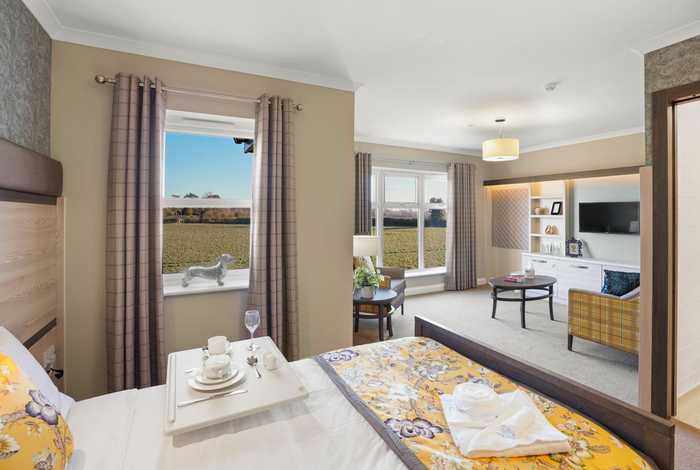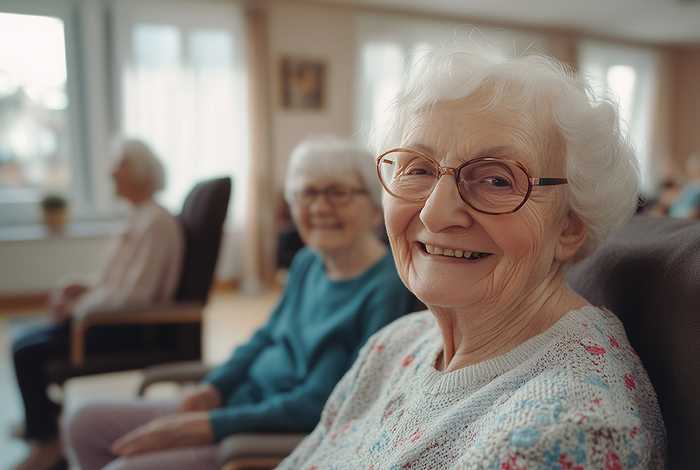Posted by Suzanne Trisk
Three steps for choosing a care home for loved ones
Finding a care home is a daunting prospect and a situation that requires organisation, patience and a great deal of emotional strength.
Moving can be a stressful process; and at times the prospect of it can be even more overwhelming than the move itself.
Often, I see people who have been in their homes for 40+ years and they are anxious and worried about moving and do not know where to start when it comes to sorting through their sentimental items, deciding what to keep and what to dispose of as well as going through years of photographs, bank statements and paperwork. They are nervous about finding somewhere to live, all the change of address administration and they are emotional about leaving their family homes and all the memories.
If you are planning to help someone make the leap, it can be equally as stressful.
Convincing them that a care home is the best option, helping to make personal decisions plus trying to coax family members or friends to part with items that mean so much to them, can all add to the worry and the workload.
Once it has been decided that a move into a care home is the next step, then following the 3 W Rule will help to consolidate your needs before the search starts in earnest.
1. Why - Consider the reasons for moving into a care home and the person’s needs, as this will form the basis of your search. Ask yourself questions such as are they fairly independent? Do they have existing health needs? Is nursing care necessary or is residential care sufficient?
Rather than having to move care homes again, think about the longevity of the offering and extra care provided. Although it can be difficult, it is important to think of the ‘bigger picture’ at this initial stage and what the future needs may be – another move could potentially be very unsettling and costly.
2. Where – We’ve all heard the phrase “location, location, location!” Location is important for a number of reasons; either people choose to stay in their local area in order to be close to friends and family and the places they are familiar with; or they move into completely new areas, to be nearer family and friends who will be able to visit them more frequently.
There can be a juxtaposition between the comfort and familiarity of area and surroundings versus the practicalities for family who live elsewhere and therefore it is important to come to an agreement early on. This is also beneficial when it comes to focussing the search.
3. When – This may sound obvious, but how quickly you need to move does not always correspond with how quickly you can move. There are various elements that can affect the ‘when’, the primary being the cost of care. Costs vary depending on the type of home, any extra needs as well as the geographical location, therefore it is important to consider how the care will be funded.
If the move to a care home is dependent on the sale of a property, it may not be immediate and this could have a bearing on the availability of rooms in your preferred care home.
Some of the clients using Your Home Move services are dependent on the sale of a house to pay for their care home. So if they can free up capital or use savings to cover the fees while their sale is progressing, then not having to worry about how to cover the costs month by month will eliminate one area of stress.
It will also mean that the move can be made sooner. It is always prudent to seek financial advice as to how to fund care based on your specific circumstances.
I find that these 3 W Rules are the stepping stones to help an individual or a couple to decide what is important to them. Plus, if you are helping to make decisions with or on behalf of someone else, they are a great way to get the input of everyone involved, to discuss individual priorities and to make sure that everyone is in on the same page before the detailed search begins.
Getting agreement from the outset helps to reduce the stress for everyone and also ensures the person who is moving feels included, independent and in control.
There are various elements that, of course, are important when choosing a care home, including ratings and reviews. However, most of the final decisions that are made are entirely personal and instinct based.
At the moment, due to the Corona Pandemic, it is not possible to look round for yourself, but that does not stop you being able to make informed decisions.
Virtual tours
Instead, care homes are providing virtual tours which often introduce the key members of staff as well as show the communal areas, activities, the bedrooms available, the grounds and facilities. For those moving, this is such a personal and emotionally charged situation and watching the videos will at least help to get an idea about what is on offer.
Another benefit of the videos is that you are not restricted to the number of them you can watch – so you can take a look at more care homes than you potentially would have done face-to-face visits for, allowing you to compare them as well as watch them multiple times.
For those who are not technically savvy or who just like to have a hard copy of information, brochures are a good reference tool. Without face-to-face contact, I find that a great way to get a feel for a place is on the phone. This is where your instincts kick in. You can tell a lot about someone and somewhere by the manner and attitude of people on the telephone – are they friendly and caring?
This is entirely personal, but your perceptions and the way people come across are often a reflection of the values and attitudes of the care homes themselves.
Although, visits in person are not feasible, there are questions you can ask and things to consider that will help you to make your final decision. Use the checklist below as a starting point as these will lead to further questions and a wider conversation.
Checklist
Current admissions policy - care homes are still taking admissions, depending on their rates of infection. Once you have made your shortlist you will need to check the admissions policy, visiting and moving day policies as well as talk to them about their rates of Covid-19 infections, the availability of PPE and testing kits for staff and residents.
Also check their ‘in house’ isolation policies – usually it is 14 days of self-isolation in the room if coming from a hospital, but if you have been shielding at home you can be integrated straight into the community.
Fees - what are the fees, the structure of them and are there any additional ones e.g. extra items/services/after a resident’s death?
Facilities - what facilities are there and what is included in the fee? – chiropody and hairdressing for example can be extra costs. Ask if there any specific changes in light of the current situation.
Activities – ask to see a plan of activities which usually includes seated exercise and games. (Pre-pandemic activities would have included regular trips out).
Food – ask to see the weekly menu. Usually the lunch menu is more extensive, with a lighter meal being served in the evening.
Mealtimes – find out about the mealtime etiquette. Are residents encouraged to eat in the restaurant, or do they eat in their rooms? If you are looking for a sociable environment, a care home where residents eat in their rooms may not be for you.
Try before you buy – ask if it is possible to have a trial (this may not be possible now) and find out what happens, if after moving in permanently, you change your mind.
Furniture – find out if the room is furnished. Some homes provide fully fitted rooms whilst others require you to furnish them yourself.
Availability – check there is availability and ask to see every room that you can choose from on the virtual tour. Or ask for photos. Many of the care homes on Autumna have virtual tours, photos and videos within their listings.
Don’t be afraid to call or email with further questions. If it is the right place for you or your loved one, they will be happy to reassure you and explain everything more than once.
When you have made your decision, the next steps will be explained to you. These will include an at-home assessment (with care home staff wearing PPE) and the care home requesting GP records before the final fees are quoted.
You will be reassured to know that as a matter of course on moving day new residents are checked and their ‘vitals’ (pulse, temperature, blood pressure and respiratory rate) are taken to establish their baselines. Care home procedures can vary, however you should find that currently residents’ temperatures are taken twice daily as a precaution.
Moving day itself can be an emotional rollercoaster, particularly at this time, when there is less access to help and support, and people have often been alone for several months. At Your Home Move we often find that once unpacked and with a cup of tea in hand, the relief and relaxation begins.
Saving time. Alleviating stress
For almost a decade Suzanne at Your Home Move has been helping individuals save time and alleviate stress when moving into care homes, sheltered accommodation or downsizing to a smaller property.
Her remit is vast and includes buying and selling property, sorting through personal possessions and confidential paperwork, taking items to charities or consigning them to auction, change of address administration, packing and unpacking and ensuring that every aspect of the move goes smoothly.
You can find out more by calling 0203 903 9915 or emailing info@yourhomemove.net
Other articles to read
Autumna Blog

Older Persons Care Advice
Ultimate guide to care homes in Norwich
April 23rd, 2025
Discover the best care homes in Norwich—explore lifestyle-focused options, top-rated services, and how to choose the right home with confidence.

Older Persons Care Advice
How to find an adult day care centre near you
April 22nd, 2025
Looking for an adult day care centre near you? Discover how to find safe, joyful care for your loved one—and support for yourself—on Autumna.

Older Persons Care Advice
How to shortlist care homes in Exeter
April 17th, 2025
Need help shortlisting care homes in Exeter? Learn how to filter options with confidence, compare homes, and find the best fit with Autumna’s free tools.






